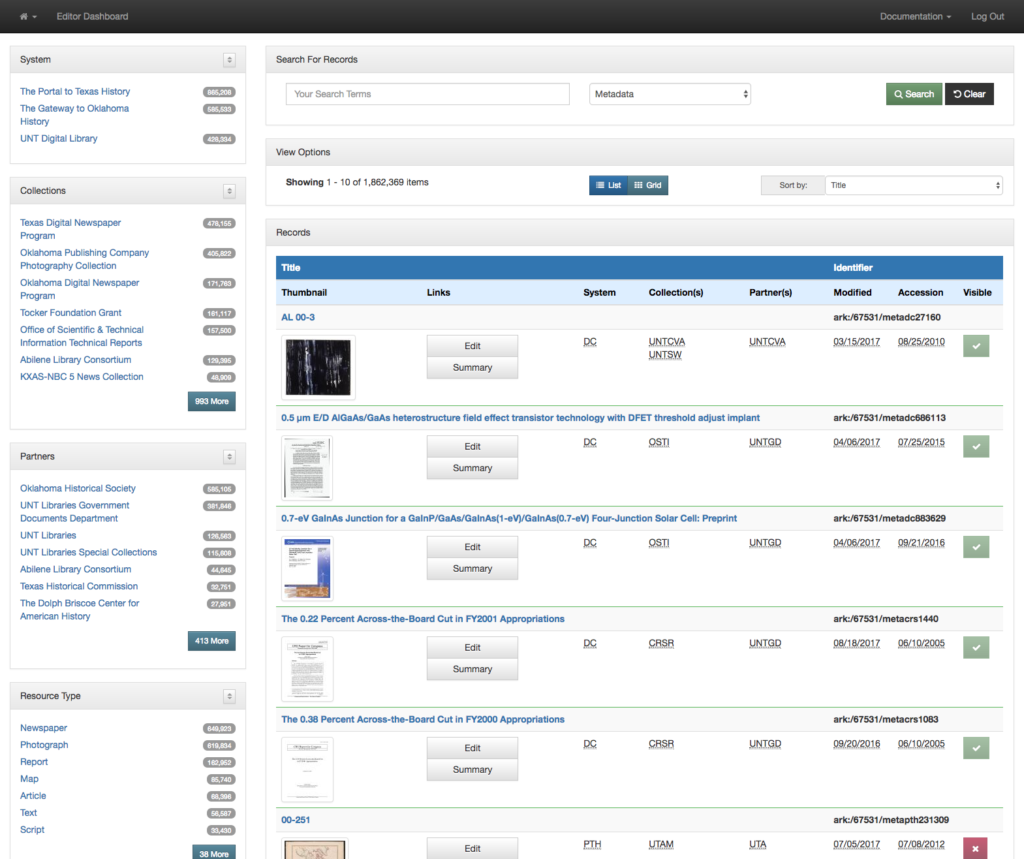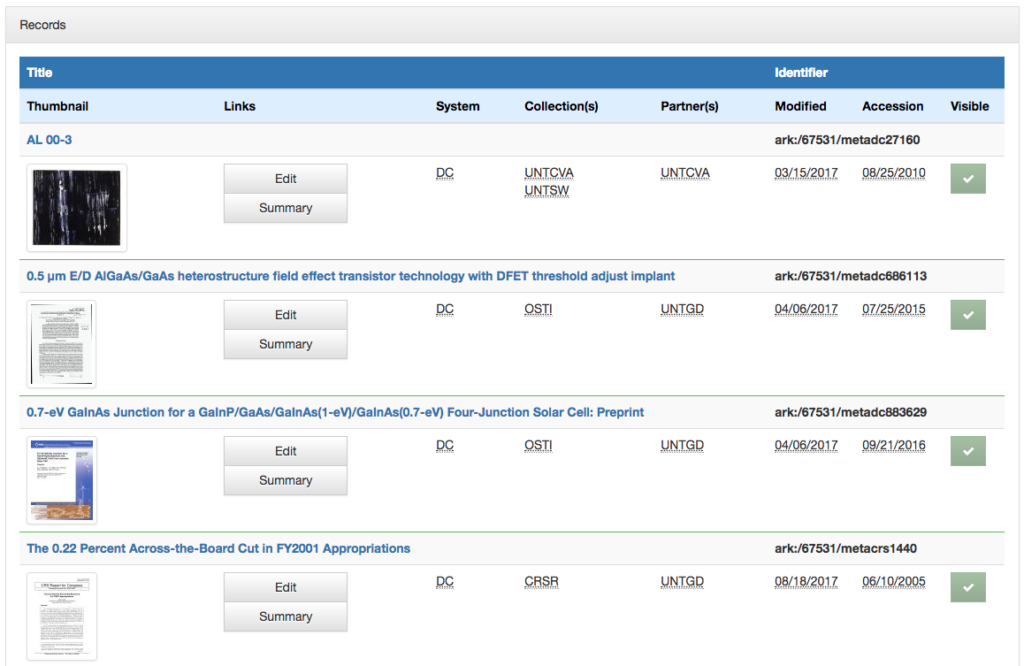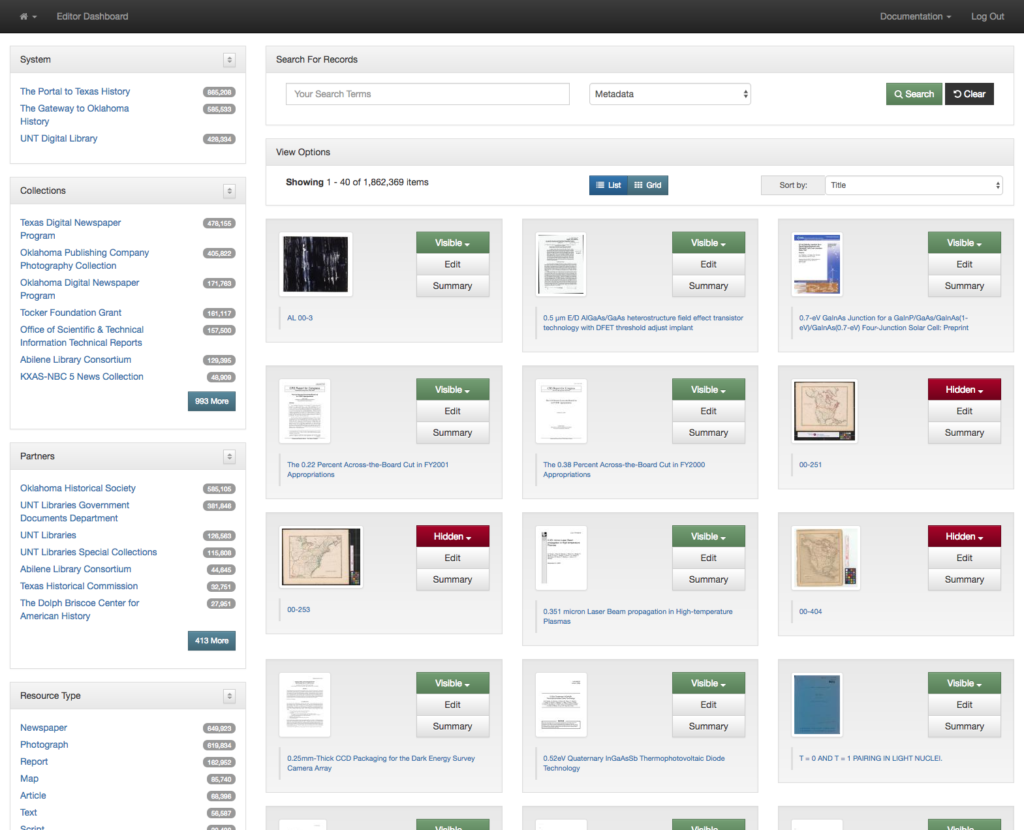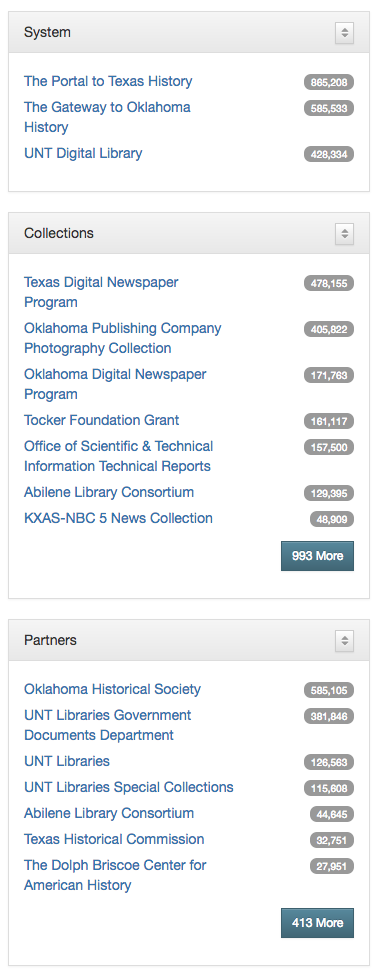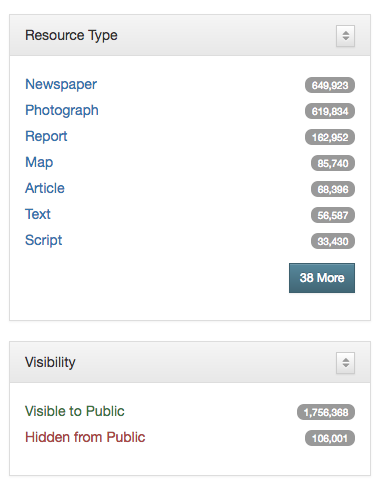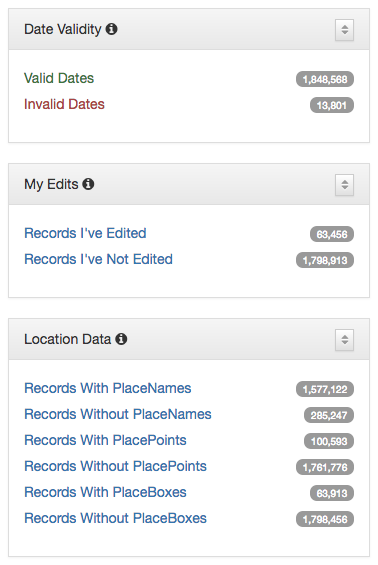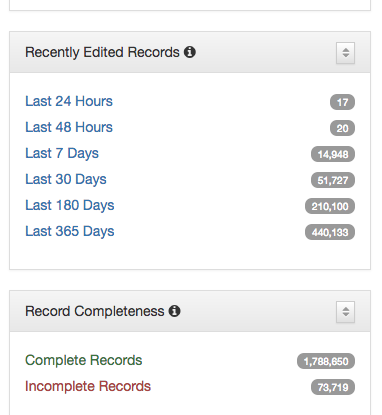This is the next blog post in a series that discusses some of the metadata interfaces that we have been working on improving over the summer for the UNT Libraries Digital Collections. You can catch up on those posts about our Item Views, Facet Dashboard, and Element Count Dashboard if you are curious.
In this post I’m going to talk about our Search Dashboard. This dashboard is really the bread and butter of our whole metadata editing application. About 99% of the time a user who is doing some metadata work will login and work with this interface to find the records that they need to create or edit. The records that they see and can search are only ones that they have privileges to edit. In this post you will see what I see when I login to the system, the nearly 1.9 million records that we are currently managing in our systems.
Let’s get started.
Search Dashboard
If you have read the other post you will probably notice quite a bit of similarity between the interfaces. All of those other interfaces were based off of this search interfaces. You can divide the dashboard into three primary sections. On the left side there are facets that allow you to refine your view in a number of ways. At the top of the right column is an area where you can search for a term or phrase in a record you are interested in. Finally under the search box there is a result set of items and various ways to interact with those results.
By default all the records that you have access to are viewable if you haven’t refined your view with a search or a limiting facet.
The search section of the dashboard lets you find a specific record or set of records that you are interested in working with. You can choose to search across all of the fields in the metadata record or just a specific metadata field using the dropdown next to where you enter your search term. You can search single words, phrases, or unique identifiers for records if you have those. Once you hit the search button you are on your way.
Once you have submitted your search you will get back a set of results. I’ll go over these more in depth in a little bit.
You can sort your results in a variety of ways. By default they are returned in Title order but you can sort them by the date they were added to the system, the date the original item was created, the date that the metadata record was last modified, the ARK identifier and finally by a completeness metric. You also have the option to change your view from the default list view to the grid view.
Here is a look at the grid view. It presents a more visually compact view of the records you might be interested in working with.
The image below is a detail of a record view. We tried to pack as much useful information into each row as we could. We have the title, a thumbnail, several links to either the edit or summary item view on the left part of the row. Following that we have the system, collection, and partner that the record belongs to. We have the unique ARK identifier for the object, the date that it was added to the UNT Libraries’ Digital Collections, and the date the metadata was last modified. Finally we have a green check if the item is visible to the public or a red X if the item is hidden from the public.
Facet Section
There are a number of different facets that a user can use to limit the records they are working with to a smaller subset. The list is pretty long so I’ll first show you it in a single image and then go over some of the specifics in more detail below.
The first three facets are the system, collection and partner facets. We have three systems that we manage records for with this interface, The Portal to Texas History, the UNT Digital Library, and the Gateway to Oklahoma History.
Each digital item can belong to multiple collections and generally belongs to a single partner organization. If you are interested in just working on the records for the KXAS-NBC 5 New Collection you can limit your view of records by selecting that value from the Collections facet area.
Next are the Resource Type and Visibility facets. It is often helpful to limit to just a specific resource type, like Maps when you are doing your metadata editing so that you don’t see things that you aren’t interested in working with. Likewise there are some kinds of metadata editing that you want to focus primarily on items that are already viewable to the public and you don’t want the hidden records to get in the way. You can do this with the Visibility facet.
Next we start getting into the new facet types that we added this summer to help identify records that need some metadata uplift. We have the Date Validity, My Edits, and Location Data facets.
Date Validity is a facet that allows you to identify records that have dates in them that are not valid according to the Extended Date Time Format (EDTF). There are two different fields in a record that are checked, the date field and the coverage field (which can contain dates). If any of these aren’t valid EDTF strings then we mark the whole record as having Invalid Dates. You can use this facet to identify these and go in a correct those values.
Next up is a facet for just the records that you have edited in the past. This can be helpful for a number of reasons. I use it from time to time to see if any of the records that I’ve edited have developed any issues like dates that aren’t valid since I last edited them. It doesn’t happen often but can be helpful.
Finally there is a section of Location Data. This set of facets is helpful for identifying records which have or don’t have a Place Name, Place Point, or Place Box in the record. Helpful if you are working through a collection trying to add geographic information to the records.
The final set of facets are Recently Edited Records, and Record Completeness. The first is the Recently Edited Records which is pretty straight forward. This just a listing of how many records have been edited in the past 24h, 48h, 7d, 30d, 180d, 365d in the system. One note that causes a bit of confusion here is that these are records that are edited by anyone in the past period of time. It is often misunderstood as “your edits” in a given period of time which isn’t true. Still very helpful but can get you into some strange results if you think about it the other way.
The last facet value is for the Record Completeness. We really have two categories, records that have a completeness of 1.0 (Complete Records) or records that are less than 1.0 (Incomplete Records). This metric is calculated when the item is indexed in the system and based on our notion of a minimally viable record.
This finishes this post about the Search Dashboard for the UNT Libraries Digital Collections. We have been working to build out this metadata environment for about the last eight years and have slowly refined it to the metadata creation and editing workflows that seem to work for the widest number of folks here at UNT. There are always improvements that we can make and we have been steadily chipping away at those over time.
There are a few other things that we’ve been working on over the summer that I will post about in the next week or so, so stay tuned for more.
If you have questions or comments about this post, please let me know via Twitter.
